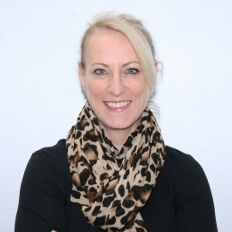They say it's a man's world and that corporate power rests in the hands of a few middle-aged males - here's how to change all that.
How To Handle The Old Boys’ Network
They say it's a man's world and that corporate power rests in the hands of a few middle-aged males - here's how to change all that.

As a champion of boardroom gender diversity, I’m disappointed by the findings of the Equality and Human Rights Commission (EHRC)’s recent report into fairness, transparency and diversity in FTSE 350 board appointments, which showed headline progress in achieving a minimum of 25% female representation on company boards “masked” the reality, that the majority of boards are blatantly white and male.
Sadly I’m not surprised.
The Old Boys’ Network continues to flourish because the top men at FTSE 350 companies use it to offer senior roles predominantly to other white, male associates within their personal networks.
The EHRC found that nearly a third of FTSE companies (32%) reported largely relying on the personal networks of current and recent board members to identify new candidates. Almost a third of companies using personal networks did not use any other means of advertising the post.
Unsurprisingly the Commission recommended that FTSE 350 companies should end their reliance on personal networks and instead publicise roles through a wide range of channels.
That said, I don’t think this long established practice is going to be halted overnight, nor do I think the problem is limited to FTSE 350 companies. The media sector where I work for example, has always been fairly pale and male at senior levels.
Now though, thanks to initiatives like the Institute of Practitioners in Advertising #MakeTheLeap which is encouraging advertising and media agencies to commit to 40% female representation and 15% BAME representation in senior positions by 2020, we’re hoping to create a fairer and more diverse environment.
In the meantime, how should ambitious, talented women tackle the old boys’ network in the various sectors where it still thrives?
1. Treat interviews at traditionally male companies like a covert operation
The old boys’ network might be alive and well, however if you’re climbing the career ladder as a woman it’s probably best not to allude to it directly. If you’re going for an interview, adopt the British Army’s motto and Be the Best.
In fact, it might help to see the interview as an SAS mission where you are storming traditional male bastions of privilege and power, using a combination of stealth, skill and supreme courage. So prepare: Do your research, recce the target – be prepared to match your skills and achievements with the demands of the job.
Use LinkedIn and internet searches to obtain hard and soft intel from anyone who might have worked there. Include a couple of hand grenades to lob into the interview in the form of amazing insights into the challenges they face or opportunities they could exploit.
Your aim is to “shock and awe” by sheer brilliance, so they don’t have any alternative but to appoint you. As the SAS motto goes - Who Dares Wins.
2. Call out bad practice
When it comes to gender and ethnic diversity what some of the worst offending companies are crying out for is a fly-on-the-wall documentary exposing their prehistoric attitudes and philosophy. Failing that, we need whistle-blowers who aren’t afraid to use social media to call out examples of bad practice.
I am aware that this is a big, and maybe an impossible, ask. But few things are as effective at driving change as a twitter storm or a Facebook post that goes viral. Remember when Greg Smith announced his scathing Op-ed resignation from Goldman Sachs published in the New York Times?
3. Build your own network
In light of the Equality and Human Rights Commission’s findings, it’s tempting to recommend setting up an old girls’ network. Certainly when starting my career in media I found building a network of talented female allies including Annie Rickard, global CEO of outdoor specialist Posterscope and Christine Walker, former chief executive of Zenith Media and co-founder of Walker Media, invaluable.
While it’s really important to connect with other inspiring and successful women, I would stop short of aping the pale male old boys’ networks. Where’s the value or challenge in connecting with people who merely mirror your education and upbringing? I think professional networks are all about extending who and what you know.
So the best way to beat the old boys’ network is to build one that’s the complete opposite. Aim to connect with your heroes, with people whom you can learn from and you can help to learn.
Build a network that is as diverse, international and inspiring as possible – that reflects who you want to be and where you want to go, rather than who you are and where you came from.
4. If you can’t beat them, join them
Arguably the best way to beat a network as ingrained as the Old Boys’ is, in fact, to join them. Don’t misunderstand me, I don’t mean copy their behaviour in any way, shape or form. What I do mean, and what I feel very passionately about is women starting their own companies, especially within the STEM sector.
According to the Government’s Business is Great campaign, if women set up businesses at the same rate as men, the UK would have an additional one million entrepreneurs with positive implications for the UK’s economic growth.
If the Old Boys’ Network won’t listen to the constant stream of research showing the commercial advantages of women holding senior roles, then we’ll just have to show them how business should be done.
Thanks for signing up to Minutehack alerts.
Brilliant editorials heading your way soon.
Okay, Thanks!





